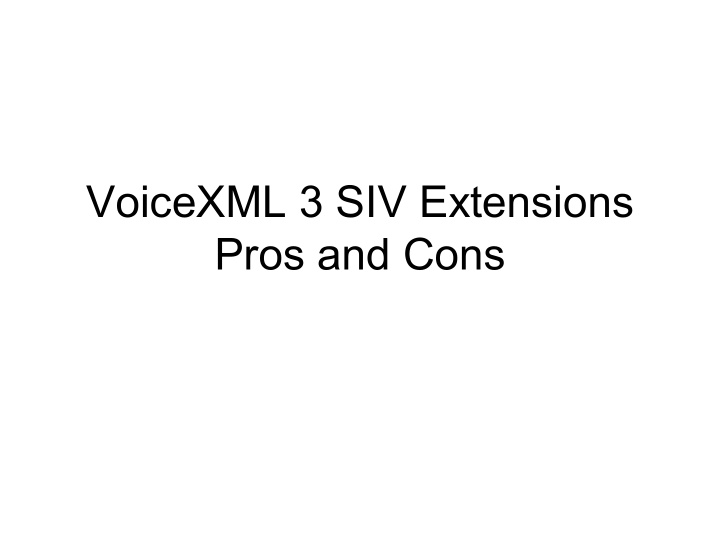



VoiceXML 3 SIV Extensions Pros and Cons
Today’s Typical SIV Architecture Audio or Link PSTN VXML Application HTTP Audio Interpreter Server or Link SIV Interface MRCP Web Services MRCP Server MRCP SIV Server Voiceprint Database ASR TTS SIV Engine Call Center Data Center
Proposed SIV Architecture PSTN VXML Application HTTP Interpreter Server BIOApi / MRCPv2 / Other MRCP MRCP SIV Server HTTP/S MRCP Server Voiceprint TTS SIV Engine ASR Database Call Center Data Center
SIV access through Browser Advantages • Simpler credential collection – Prompt, Grammar ASR, SIV all controllable via VXML • Reduced Customer Perceived latency – Streaming Authentication – Parallel ASR/SIV • Potential for improved ASR/SIV accuracy – Shared information between engine(s) • Single engine for app developers – Fewer moving parts • Local/Offline processing available
SIV access through Browser Disadvantages • “Security Concerns” – Access Controls for SIV now applied in call center – Audio in Transit – Comparison occurring in call center vs. data center • Less extensible for non-call center apps? – Agent access to SIV – Web based access to SIV • Lowest common denominator? – Some defined functionality may not be available from some vendors – Some vendors may have functionality beyond what is in the spec • SIV Results/Config exposed in the call center – Solution might be through encryption of messages
Recommend
More recommend